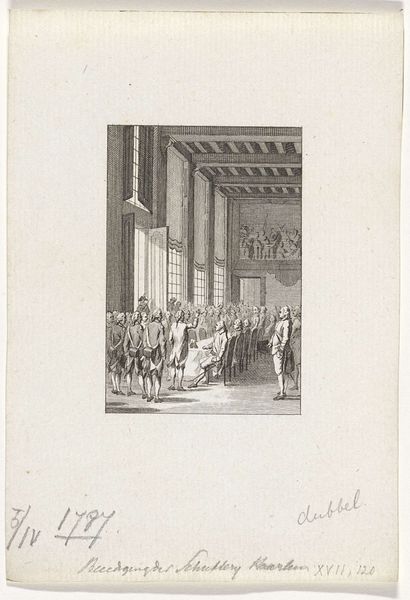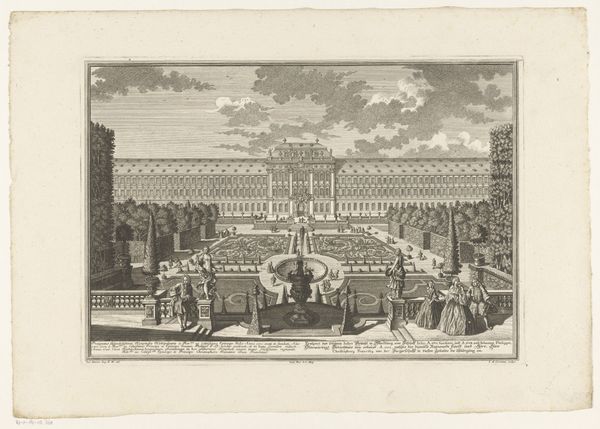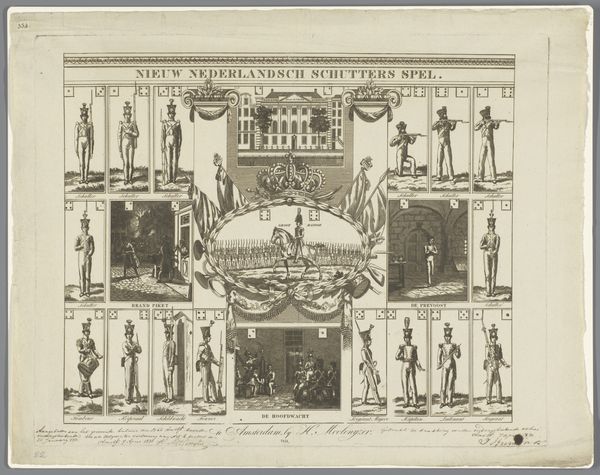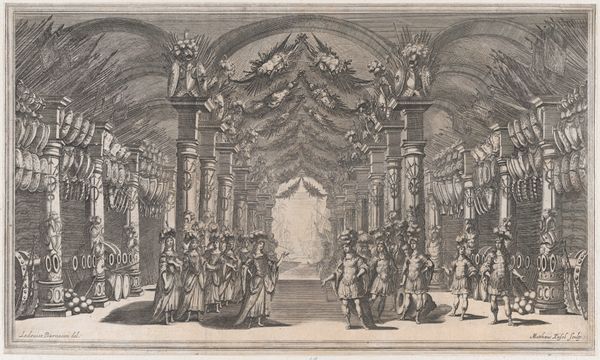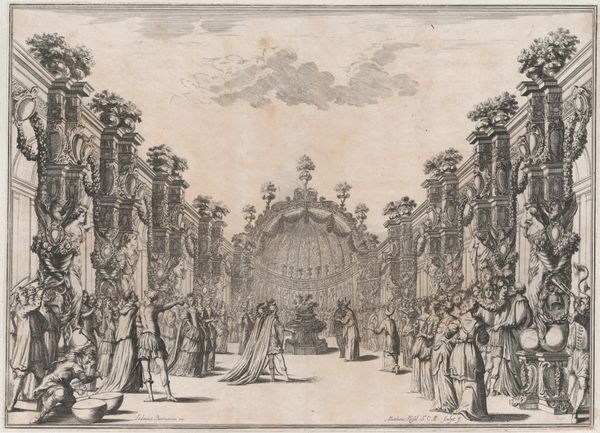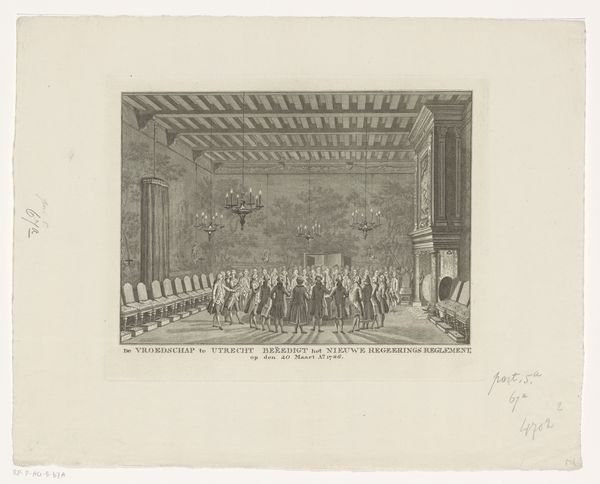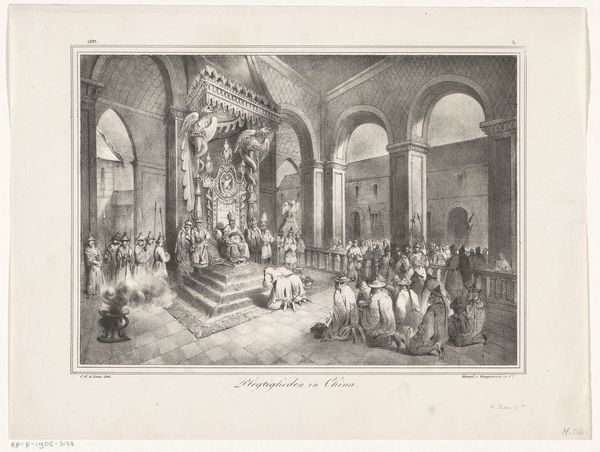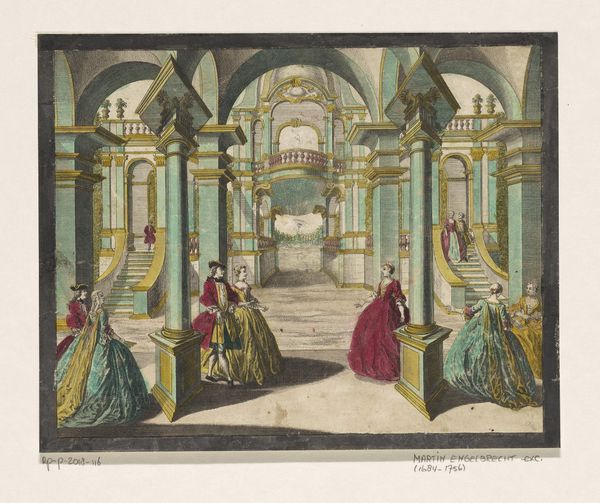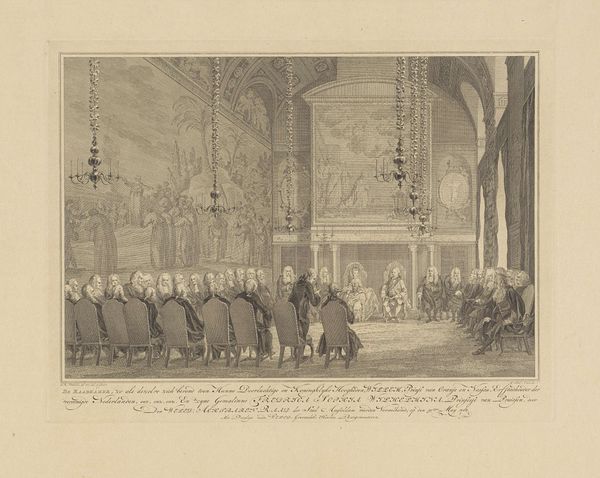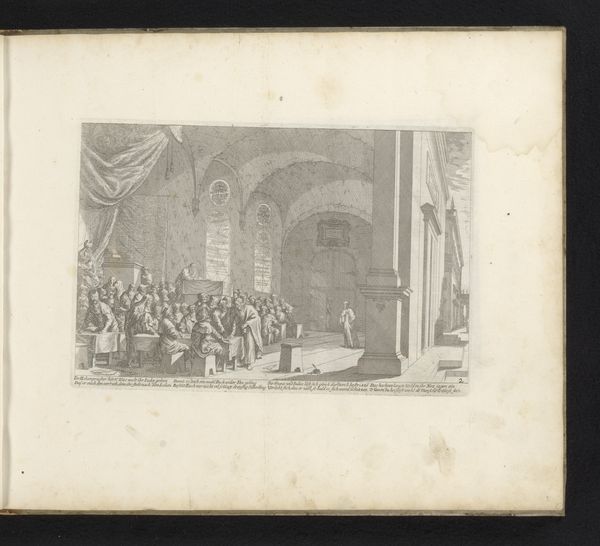
VOC Delegation at an Audience with the King Kandy, Sri Rajadi Raja Sinha Possibly 1785 - 1786
0:00
0:00
painting, watercolor
#
narrative-art
#
painting
#
asian-art
#
watercolor
#
watercolour illustration
#
genre-painting
#
watercolor
Dimensions: height 298 mm, width 269 mm
Copyright: Rijks Museum: Open Domain
Curator: Jan Brandes, likely sometime in 1785 or 1786, offers us this delicate watercolor, "VOC Delegation at an Audience with the King Kandy, Sri Rajadi Raja Sinha." Editor: The very first impression is this sort of strange coolness…almost as if the ceremony depicted is staged somehow. All of these carefully spaced figures...the pale colors...a washed-out exoticism, perhaps? Curator: Brandes, traveling with the Dutch East India Company, captured scenes and encounters like this one. You feel that sense of detachment. And that subdued palette...Well, the watercolor medium lends itself to that almost clinical observation. Look closely at the materials—paper, pigments... how do these contribute to that mood you mentioned? Editor: Right— the materiality betrays a perspective. The fine, probably imported paper and the careful application of the washes speaks of precision, control, and perhaps a desire to document more than engage. The delegation is in line, but it looks like their power comes not just from the material means of the Dutch East India Company. It has been transformed by an aesthetic approach; it becomes another medium through which they are presented, consumed, digested... Curator: But perhaps digested incompletely! What is left unsaid is palpable; that staging contributes an uncertainty of what will happen next, as if nothing could be solved merely on the level of a perfectly accurate representation. Think of all the transactions - materials, cultural performances - embodied in a watercolor such as this. Does that contribute, finally, to a complete image? Editor: Certainly! The artist's labor, the cost of the imported materials, all point toward the very unequal exchange at the heart of the East India Company’s project...and those implied and silenced moments surely trouble any idea of a self-contained or balanced composition. The aesthetic seems not to stand outside of material exchange and processes of economic exploitation. But, rather, these processes inform it, in totality! Curator: Precisely. This artwork, in its very carefulness and restraint, makes a stronger statement about those exchanges than any bolder image could. It really invites one to pause and ponder what stories hide beneath its careful washes and seemingly accurate renderings. Editor: A disquieting image, indeed, for all its apparent clarity!
Comments
No comments
Be the first to comment and join the conversation on the ultimate creative platform.


